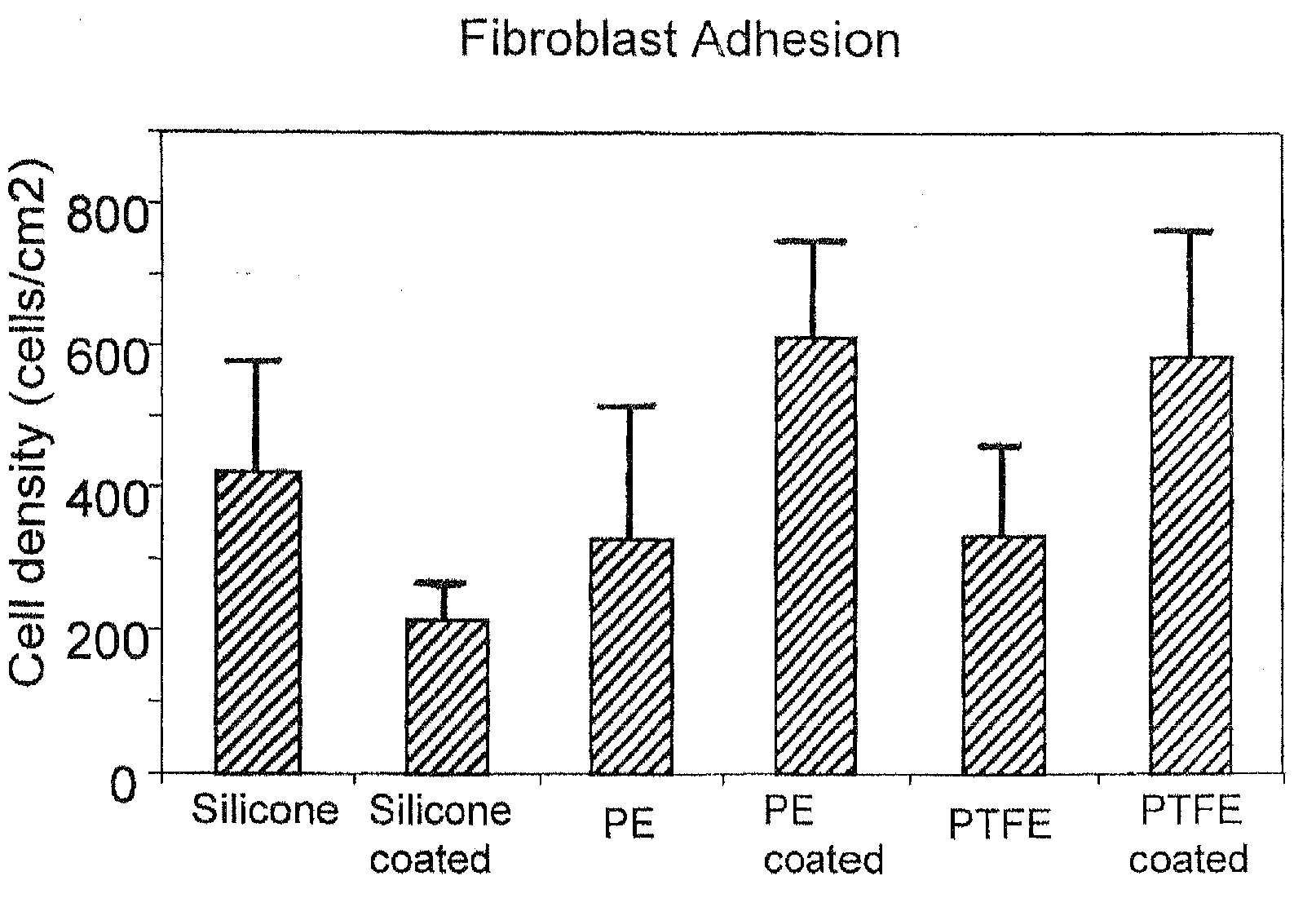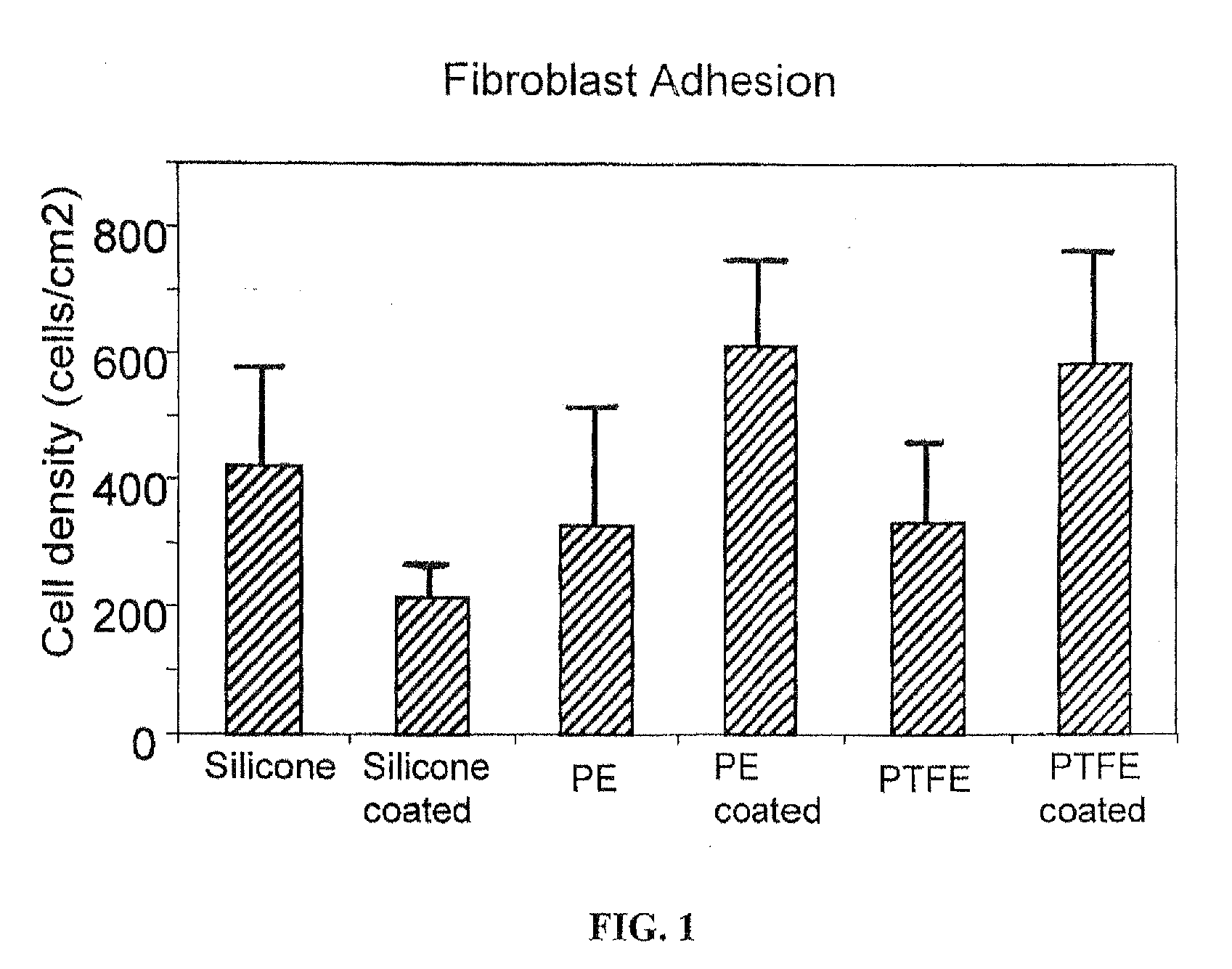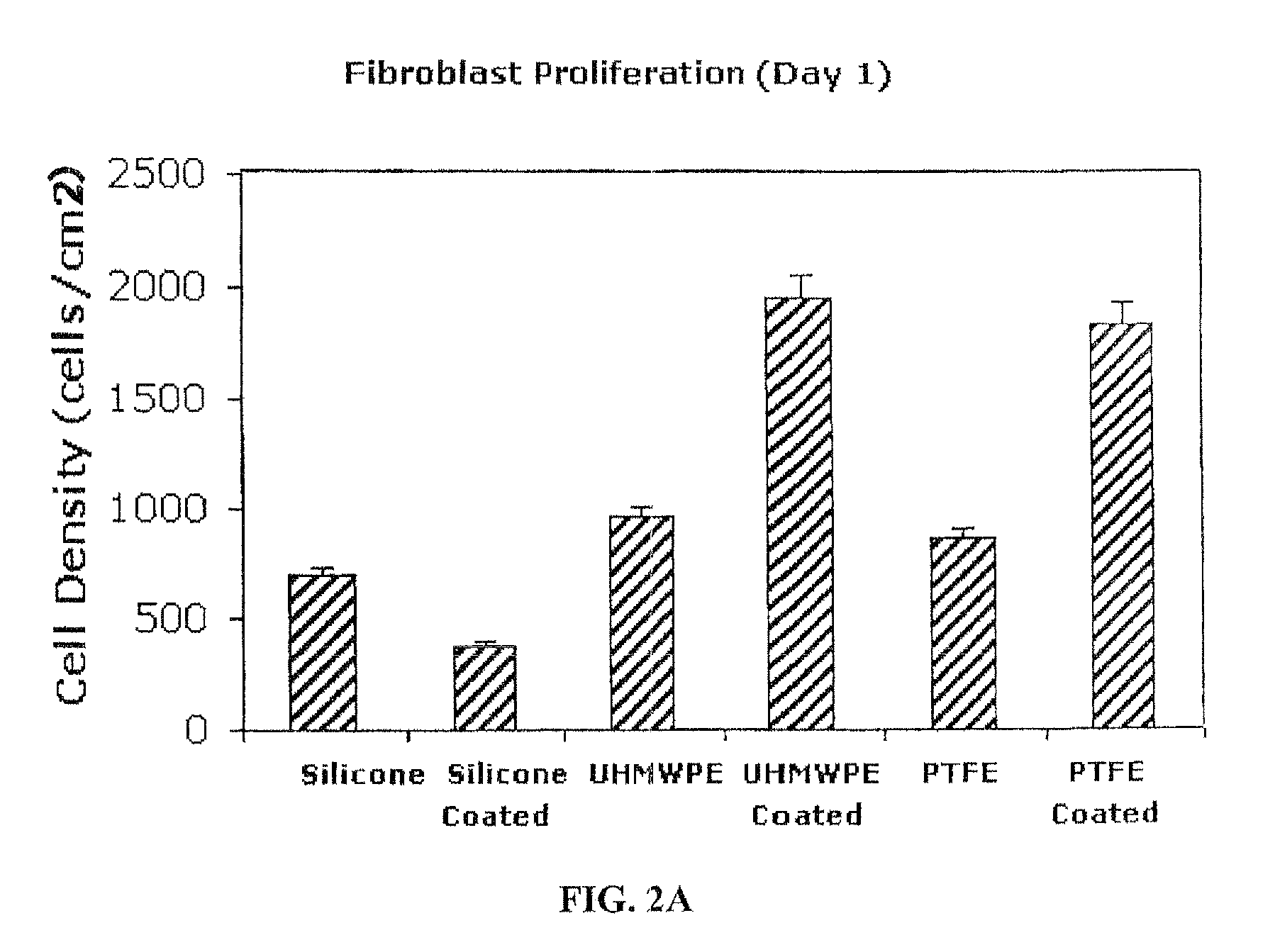Inhibitory cell adhesion surfaces
a cell adhesion and surface technology, applied in the field of engineered surfaces, can solve the problems of increasing hydrophobicity, reducing cell adhesion, and increasing surface energy, and achieve the effects of reducing reducing cell adhesion, and effective changing surface energy and hydrophobicity
- Summary
- Abstract
- Description
- Claims
- Application Information
AI Technical Summary
Benefits of technology
Problems solved by technology
Method used
Image
Examples
example 1
[0040]Ion Plasma Deposition (IPD) is a method of creating highly energized plasma using a cathodic arc discharge created from a target material, typically solid metal. An arc is struck on the metal and the high power density on the arc vaporizes and ionizes the metal, creating a plasma which sustains the arc. A vacuum arc is different from a high pressure arc because the metal vapor itself is ionized, rather than an ambient gas.
[0041]FIG. 4 illustrates an apparatus suitable for controlling deposition of the plasma ejected from the cathodic arc target source 1 onto a substrate 2. The size of the particle deposited, and thus the degree of nanotexturing of the deposited surface is controlled by a movable substrate holder 3 within the vacuum chamber 4 or by a power supply 5 to the target and adjustment of arc speed 6. The closer a substrate is to the arc source, the larger and more densely packed will be the particles deposited on the substrate.
[0042]Control of the ...
example 2
Fibroblast Attachment / Repulsion
[0043]Three types of substrates were treated with Ti 6-4 using the described IPD process to form a deposit with random depth up to 200 nm. The average nano-particle size of the coating was 10 to 30 nanometers and was confirmed by SEM analysis.
[0044]Fibroblasts were seeded onto each substrate at 3500 cells / cm2. Samples were first placed in 12 and 24 well cell culture plates. 175 μl of cell-containing droplets in media were added to the samples before incubating at 37° C. and 5% CO, for 4 hours. The samples were washed 3 times with PBS, fixed in formaldehyde for 10 min, and again washed in PBS 3 times. Cells were then counted using fluorescent microscopy and DAPI dye. Images of cell morphology were also acquired. Experiments were conducted in triplicate with two repeats each (total of six samples for each averaged data point). Standard statistical analysis by Student t-test was used to determine differences between substrates.
[0045]Results showed an unex...
example 3
Decreased Endothelial Cell Adhesion on Titanium Coated Silicone
[0047]Silicone was treated with Ti 6-4 using the IPD process to form textured thicknesses up to 200 nm. The average nano-particle size of the coating was 30 to 40 nanometers and was confirmed by SEM analysis.
[0048]Endothelial cells were seeded onto each substrate at 3500 cells / cm2. Samples were first placed in 12 and 24 well cell culture plates. 175 μl of cell-containing droplets in media were added to the samples and were incubated at 37° C. and 5% CO2 for 4 hours. The specimens were then washed 3 times with PBS, fixed in formaldehyde for 10 min, and again washed three times in PBS. Cells were then counted using fluorescent microscopy and DAPI dye. Images of cell morphology were also acquired. Experiments were conducted in triplicate with two repeats each (total of six samples for each averaged data point). Standard statistical analysis by Student t-test was used to determine differences between substrates.
[0049]Results...
PUM
| Property | Measurement | Unit |
|---|---|---|
| thick | aaaaa | aaaaa |
| size | aaaaa | aaaaa |
| distance | aaaaa | aaaaa |
Abstract
Description
Claims
Application Information
 Login to View More
Login to View More - R&D
- Intellectual Property
- Life Sciences
- Materials
- Tech Scout
- Unparalleled Data Quality
- Higher Quality Content
- 60% Fewer Hallucinations
Browse by: Latest US Patents, China's latest patents, Technical Efficacy Thesaurus, Application Domain, Technology Topic, Popular Technical Reports.
© 2025 PatSnap. All rights reserved.Legal|Privacy policy|Modern Slavery Act Transparency Statement|Sitemap|About US| Contact US: help@patsnap.com



